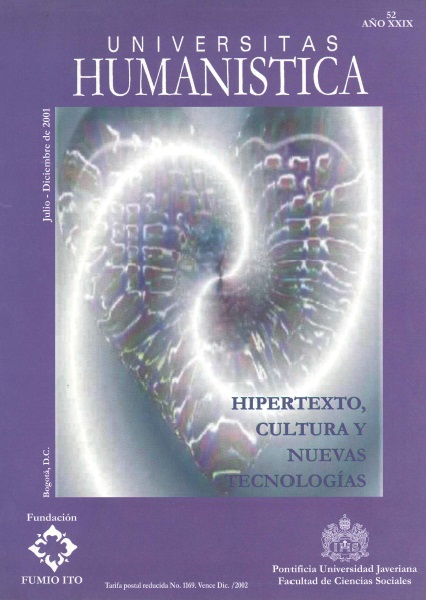Abstract
Se describe la tecnología hipertextual que representa un espacio informativo por medio de la vinculación no lineal entre sus unidades. El potencial ilimitado, que es propio para las formas hipertextuales, se manifiesta cuando se analizan los sistemas con los ligamientos no lineales del soporte computacional. Un proyecto específico de la tecnología hipertextual, iniciado en la ex unión Soviética y actualmente desarrollado en Rusia, se plantea como una construcción automática de los textos coherentes con base en las unidades informativas obtenidas de la red. Esta tecnología presupone una navegación algorítmica por la red hipertextual la cual se basa en una correspondencia entre las conexiones, topológicas y semánticas, de los nodos que contienen los ítems de textos separados (datos, afirmaciones, aserciones en el proceso de inspiración, etc.). En el hipertexto, los vínculos entre los nodos se establecen con base en su cercanía semántica, lo que se hace automáticamente cuando se usan varias posibilidades semánticas de las unidades correspondientes. Cada ruta hipertextual constituye un discurso lineal. Por medio de varias reglas de navegación se construyen los discursos que pueden satisfacer diferentes requerimientos de coherencia. Por ejemplo, un nodo tiene que tener cierta cantidad de los vínculos precedentes en una ruta de navegación para que sea seleccionado como un paso siguiente en esta misma ruta.

This journal provides immediate open access to its content on the principle that making research freely available to the public, encourages greater global exchange of knowledge.
The journal Universitas Humanística is registered under a Creative Commons Attribution 4.0 International Public License. Thus, this work may be reproduced, distributed, and publicly shared in digital format, as long as the names of the authors and Pontificia Universidad Javeriana are acknowledged. Others are allowed to quote, adapt, transform, auto-archive, republish, and create based on this material, for any purpose (even commercial ones), provided the authorship is duly acknowledged, a link to the original work is provided, and it is specified if changes have been made. Pontificia Universidad Javeriana does not hold the rights of published works and the authors are solely responsible for the contents of their works; they keep the moral, intellectual, privacy, and publicity rights.
Approving the intervention of the work (review, copy-editing, translation, layout) and the following outreach, are granted through an use license and not through an assignment of rights. This means the journal and Pontificia Universidad Javeriana cannot be held responsible for any ethical malpractice by the authors. As a consequence of the protection granted by the use license, the journal is not required to publish recantations or modify information already published, unless the errata stems from the editorial management process. Publishing contents in this journal does not generate royalties for contributors.


